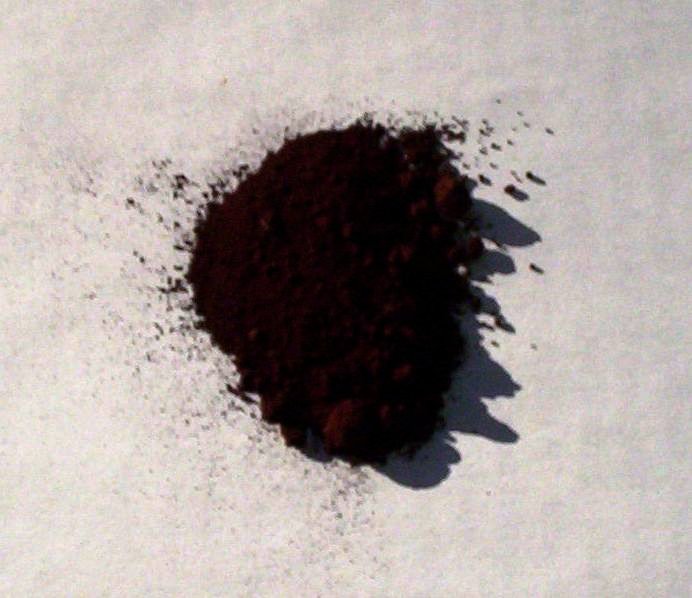Facts for Kids
Lead oxide is a chemical compound primarily used in batteries, glazes, and as a pigment, known for its high density and various forms.
Overview
Production Methods
Chemical Properties
Safety And Handling
Uses And Applications
Historical Significance
Future Trends In Research
Health And Environmental Impact
Comparison With Other Lead Compounds

Inside this Article
Melting Point
Heavy Metal
Production
Carbonate
Breathing
Cosmetics
People
Planet
Energy
Did you know?
🔬 Lead oxide is a key component in the manufacturing of lead-acid batteries.
🧪 It exists in several forms, including litharge (PbO) and massicot (PbO).
⚙️ Lead oxide has a high melting point, making it suitable for high-temperature applications.
📦 It is commonly used as a glass and ceramic glaze component.
⚠️ Lead oxide can be toxic, and proper handling and safety measures are essential.
📉 It's used in radiation shielding due to its dense structure.
🎨 Lead oxide is historically used as a pigment in paints and glassware.
🔋 The compound is a vital material for the production of certain types of semiconductors.
♻️ Recycling of lead oxide from spent batteries is an important environmental process.
🔎 Lead oxide has been studied for its potential in electronic and solar cell applications.
Introduction
This amazing compound is used in many things around us! For example, you can find it in batteries, paints, and glass. Lead oxide was discovered many years ago, making it an important part of science and industry. It helps make products that we use every day. Remember, while it can be useful, we should always be careful when working with it! ⚗
️
Production Methods
The most common method is roasting lead ores, which are rocks that contain lead. Once the ores are heated, they produce lead oxide and other materials. There are specialized factories that use this technique to create high-quality lead oxide for various industries. 🏭
The processes must be done carefully to keep workers safe and to reduce pollution. New methods are being researched to make production safer and more eco-friendly! 🌬
️
Chemical Properties
In terms of color, they both look different, too! Lead oxide can dissolve in acids but not in water. It has a high melting point, which means it takes a lot of heat to change it from solid to liquid. Its unique properties help scientists create a variety of products. 🌡
️
Safety And Handling
Always wear gloves and a mask to protect yourself from dust and particles. Never eat or drink while handling lead materials! ⚠
️ It's also essential to work in a well-ventilated area to avoid breathing in harmful substances. If you accidentally get lead oxide on your skin, wash it off immediately! 🧼
And remember, it's best to let adults handle lead oxide and related materials. Following safety guidelines helps keep everyone safe! 😊
Uses And Applications
️ One important application is in lead-acid batteries, which power cars and help store energy. 🚗
Additionally, red lead oxide is often used in paints and colors that help protect metal surfaces from rust! It's also found in some types of glass to make them shine brightly. 💎
Lead oxide helps make products more durable and colorful. However, because lead can be harmful, it's essential to use it carefully. Manufacturers are always finding new ways to use it safely. 🌍
Historical Significance
People have been using lead in various forms for thousands of years. The ancient Egyptians and Romans used lead oxide in cosmetics and paints. 🍶
In the 18th and 19th centuries, lead oxide played a big role in the development of batteries. This helped the modern world grow, as batteries powered many inventions! 🚀
Today, researchers continue to study lead oxide to discover new ways to use it while finding better alternatives. It’s exciting to see how this material has shaped history! 🏺
Future Trends In Research
Scientists are looking into alternatives that can replace lead oxide in batteries and paints, helping to create eco-friendlier products. ⚡
One exciting trend is making lead-free batteries that still have great power! Researchers are also studying how to recycle lead oxide safely from old batteries and other products, which is crucial for protecting our planet. 🌏
By continuing to innovate, we can use materials like lead oxide in smarter and safer ways!
Health And Environmental Impact
When people breathe in or touch lead, it can get into their bodies and cause health problems, especially for kids. It can affect the brain and make it hard to learn. 📚
That's why it's essential always to wash hands after using materials that contain lead oxide! Moreover, when lead oxide gets into the environment, it can pollute the soil and water. 🏞
️ That's why scientists and environmentalists are working hard to find safer alternatives to protect our health and planet! 🌱
Comparison With Other Lead Compounds
While lead oxide is often used in batteries and paints, lead sulfide is mostly used in electronic devices and detectors! 📱
Another compound, lead carbonate (PbCO3), is found in some pigments. Although they are all made of lead, their uses and properties can be quite different. Comparing lead oxide to other compounds helps scientists understand how to use them safely and effectively! 🌈

